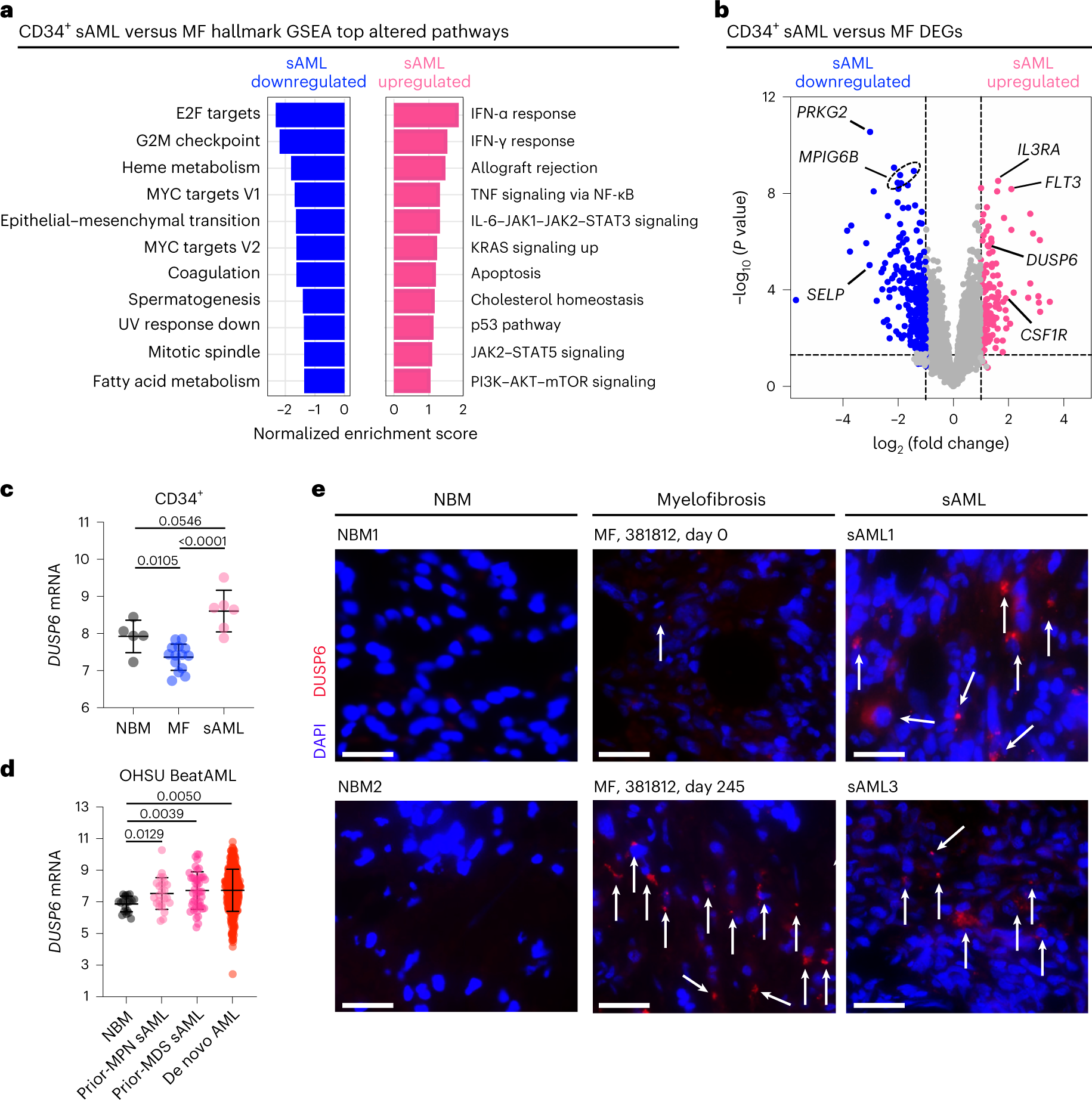A kind of chronic leukemia, myeloproliferative neoplasms (MPNs), can afflict patients for many years and some patients may require treatment to better manage this type of blood cancer, while others may experience a long observation period. However, for a small percentage of patients, the slow-paced disease can transform into a more aggressive form of cancer, secondary acute myeloid leukemia. With very limited effective treatment options, researchers have not found out how this transformation occurs.
In a recent study published in the international journal Nature Cancer, entitled “DUSP6 mediates resistance to JAK2 inhibition and drives leukemic progression”, scientists from the University of Washington School of Medicine and other institutions identified a key transition point in the transition from chronic to aggressive leukemia, and found that blocking a key molecule in this transition pathway may prevent the progression of the dangerous disease in mouse models of the disease and in mice carrying tumor samples from human patients.

Fig. 1 DUSP6 mediates resistance to JAK2 inhibition and drives leukemic progression. (Kong, 2023)
The researcher, Dr. Stephen T. Oh, introduced that patients with secondary acute myeloid leukemia have a poor prognosis and almost every acute leukemia patient with a history of myeloproliferative neoplasm dies from the disease, so their focus in this study was to better understand how the disease changes from chronic to aggressive in order to develop better therapies or preventive measures. He also suggested that inhibiting a key transitional molecule called DUSP6 might help overcome cancer resistance to JAK2 inhibitors, which are commonly used to treat this type of cancer, and are also an anti-inflammatory therapy used to treat rheumatoid arthritis.
These patients are usually treated with JAK2 inhibitors, but their disease progresses despite treatment, so the researchers wanted to try to identify how the disease becomes worse in the presence of JAK2 inhibitor therapy. The researchers studied the genetic characteristics of these tumors in depth, both in the slow, chronic stage and in the stage where the disease has transformed into a malignant form. Patients were treated with JAK2 inhibitors and the researchers found that the all 40 patients had high levels of DUSP6 gene expression in their tumors.
In addition to using genetic techniques to eliminate the DUSP6 gene to prevent the transition to the malignant form of the disease in the cancer model mice, the researchers also tested a drug that inhibited DUSP6 expression and found that in two different cancer mouse models and in mice carrying tumors from human patients, this compound, which has only been used in animal studies, was able to block the progression from chronic to malignant disease. Reducing the expression of DUSP6 by genetic means and drugs reduces the level of inflammation in the organism of these animal models.
Since drugs that inhibit DUSP6 expression cannot be used in human clinical trials, the researchers team was interested in gaining insight into therapies that inhibit another molecule that is activated downstream of DUSP6 and is also required to maintain the negative effects of DUSP6. There are currently several drugs in clinical trials that inhibit the expression of downstream molecules such as RSK1, and for this reason, the researchers investigated how these drugs might potentially block the conversion of the disease from a chronic to an aggressive form, as well as helping to address the problem of resistance to JAK2 inhibition in cancer. In future clinical trials, researchers might recruit more patients with myeloproliferative neoplasms who are taking JAK2 inhibitors, despite the fact that their disease is already showing signs of progression.
At this point, the researchers might add the RSK inhibitor currently being tested to the treatment to see if it can help halt the progression of the disease to aggressive secondary acute myeloid leukemia. The researchers are currently testing the efficacy of the newly developed RSK inhibitor for breast cancer patients in a phase 1 clinical trial. In this way, they hope that this study will lay the groundwork for the development of a novel therapy to treat patients with chronic blood cancers.
In summary, the results of this study reveal that DUSP6 may drive cancer transformation, and the researchers have also identified that the DUSP6-RSK1 axis may act as a susceptible druggable pathway in myeloid malignant blood disorders.
Reference
1. Kong, Tim, et al. “DUSP6 mediates resistance to JAK2 inhibition and drives leukemic progression.” Nature Cancer 4.1 (2023): 108-127.
